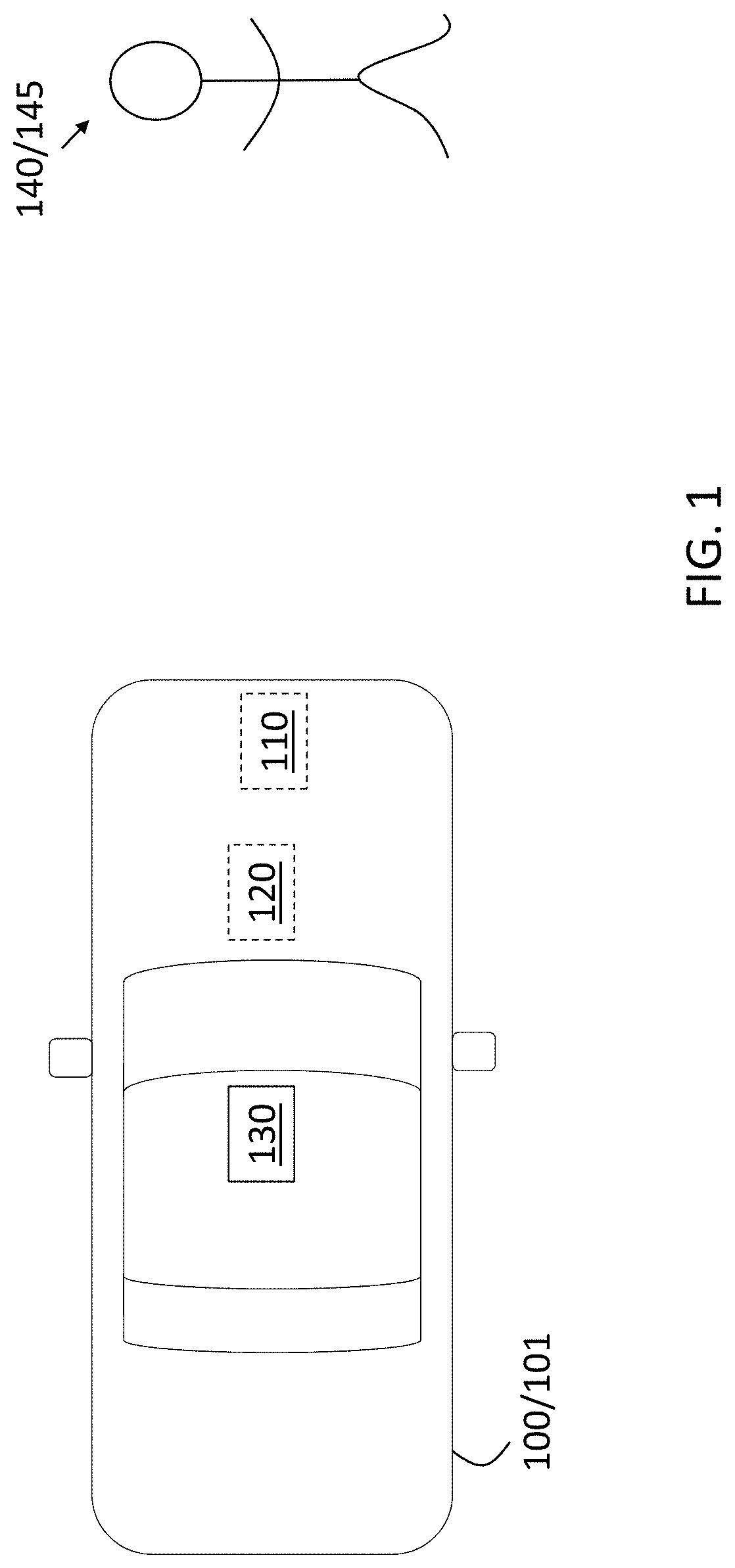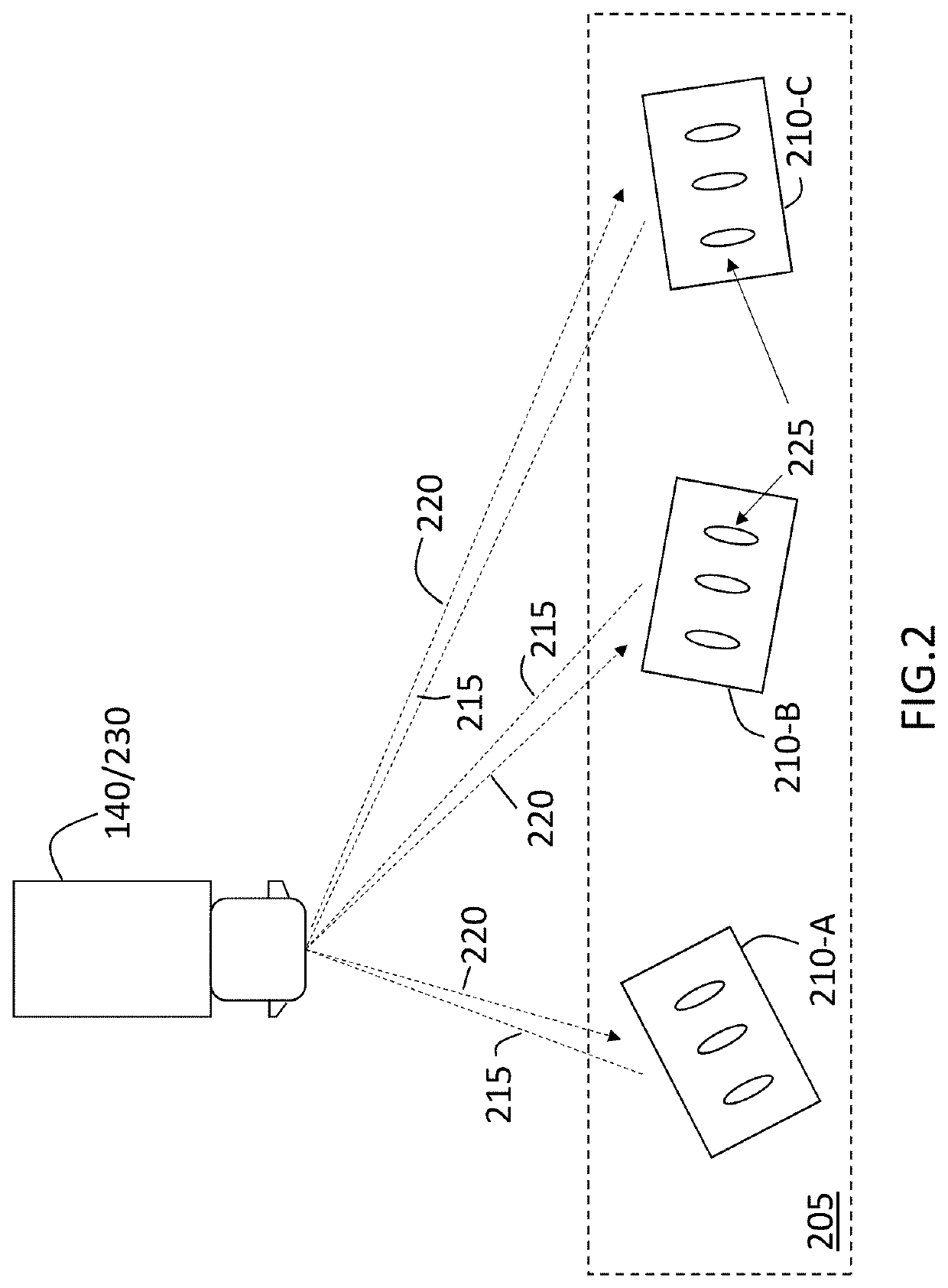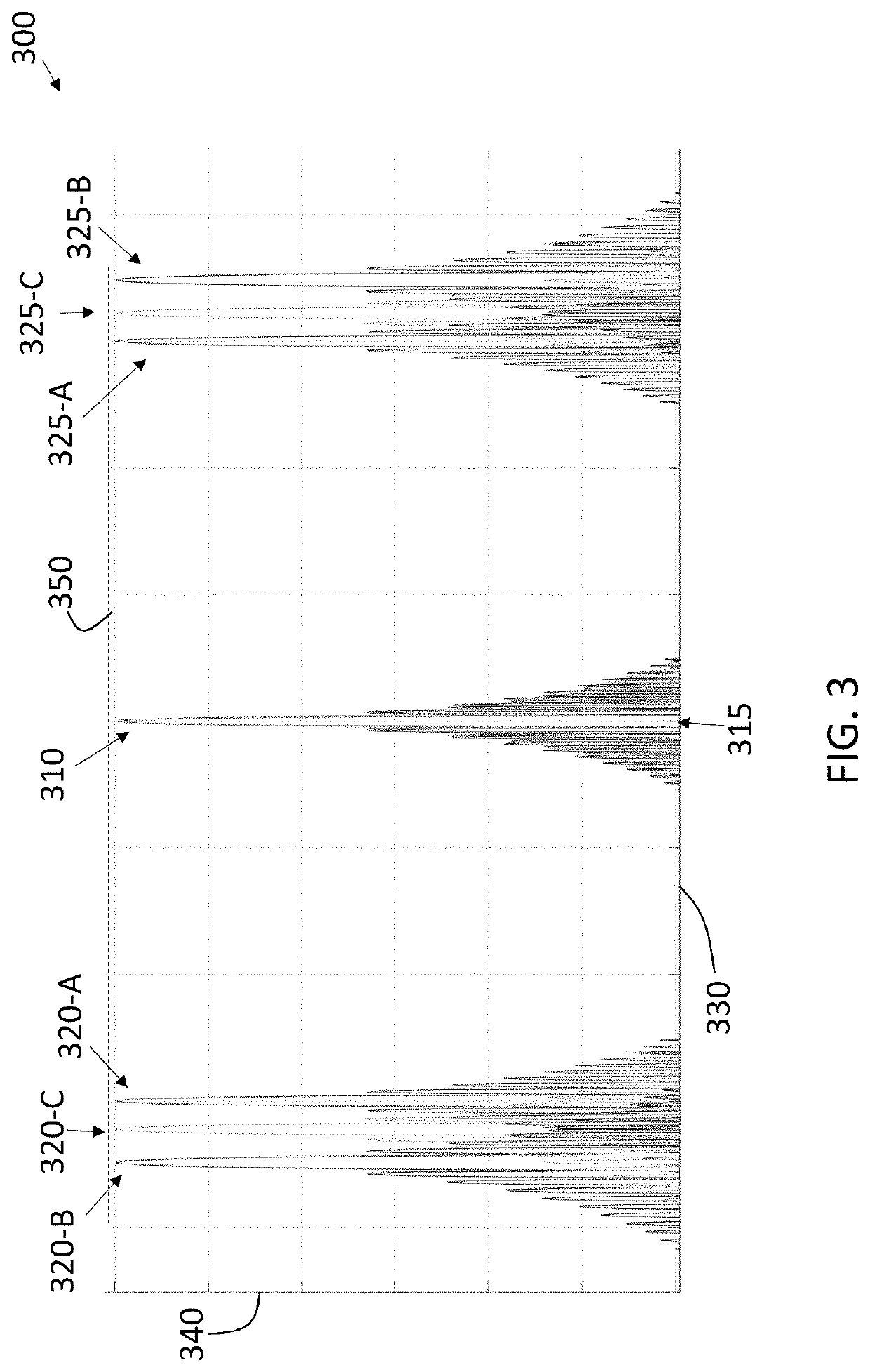Antenna array tilt and processing to eliminate false detections in a radar system
a radar system and array technology, applied in the field of antenna array tilt and processing to eliminate false detections in radar systems, can solve the problems of false detections, power, cost requirements, relative large number of antenna elements,
- Summary
- Abstract
- Description
- Claims
- Application Information
AI Technical Summary
Benefits of technology
Problems solved by technology
Method used
Image
Examples
Embodiment Construction
[0029]The following description is merely exemplary in nature and is not intended to limit the present disclosure, its application or uses. It should be understood that throughout the drawings, corresponding reference numerals indicate like or corresponding parts and features.
[0030]As previously noted, a wide aperture of antenna elements in a radar system facilitates obtaining information from a wide field of view. However, a dense array of antenna elements over that width with the requisite half-wavelength spacing between them is costly in terms of components and complexity. At the same time, a more sparse array of antenna elements, which are spaced apart by more than a half-wavelength, results in decreased angular resolution and false detections due to ambiguity in determining the angle of arrival of reflections. Embodiments of the systems and methods detailed herein relate to antenna array tilt and processing to eliminate false detections in a radar system. The antenna array is d...
PUM
 Login to View More
Login to View More Abstract
Description
Claims
Application Information
 Login to View More
Login to View More - R&D
- Intellectual Property
- Life Sciences
- Materials
- Tech Scout
- Unparalleled Data Quality
- Higher Quality Content
- 60% Fewer Hallucinations
Browse by: Latest US Patents, China's latest patents, Technical Efficacy Thesaurus, Application Domain, Technology Topic, Popular Technical Reports.
© 2025 PatSnap. All rights reserved.Legal|Privacy policy|Modern Slavery Act Transparency Statement|Sitemap|About US| Contact US: help@patsnap.com



